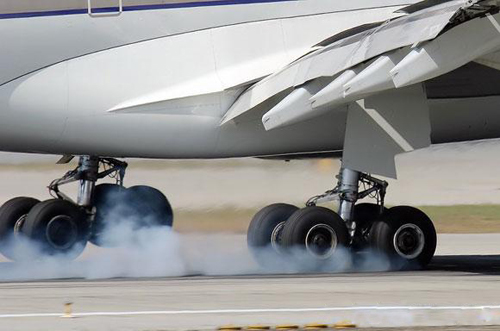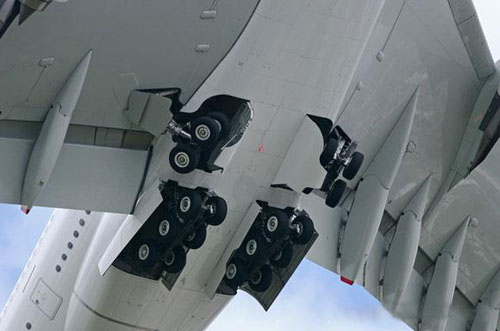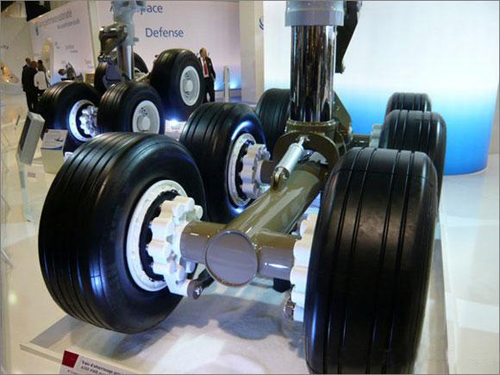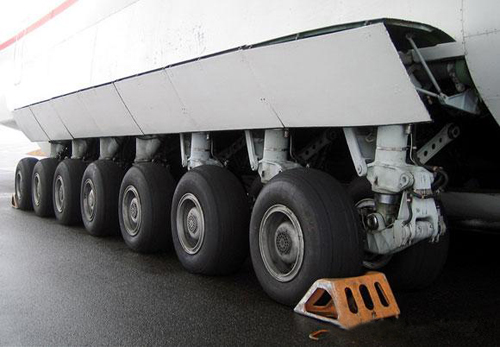Usual aircraft's tire

You are used to vehicle tires, but how about aircraft tire? Do you know anything about aircraft tires?
Aircraft operating conditions require a wide variety of tire sizes and constructions. The modern aircraft tire is a highlyengineered
composite structure designed to carry heavy loads at high speeds in the smallest and lightest configuration
practical. Tires are a multi-component item consisting of three major materials: steel, rubber and fabric. There are
different types of fabric and rubber compounds in a tire construction, each with its own special properties designed to
successfully complete the task assigned.


Radial aircraft tires feature a flexible casing which is constructed of rubber-coated ply cords which extend around the
beads and are substantially at 90° to the centerline of the tread. The casing is stabilized by an essentially inextensible
circumferential belt. This diagram contains all the potential components of a radial tire. Due to design parameters, your tire
may or may not contain all pictured components.

Difference with vehicle tires
Aircraft tire has several circles of grooves around the tire, with no transverse grooves. However, vehicle tire has both circle grooves and transverse grooves. Because aircraft tire needs good anti-skidding function, that's why people designed circle grooves for aircraft tires. Transverse grooves will cut tire's life, that's why there are no transverse grooves for aircraft tires.

The following parameters help explain the magnitude of forces acting on the tire carcass and tread as it runs under
extreme conditions on a test dynamometer.

At this speed, it takes only 1/800 of a second to travel 1/2 the length of the footprint (CX). In that same time, the tread
surface must move radially outward 1.9 inches. This means an average radial acceleration of 200,000 ft./sec./sec. That’s
over 6,000 G’s!
This means the tread is going through 12,000 to 16,000 oscillations per minute.
Obviously, a tire cannot withstand this type of punishment. How can a traction wave be reduced or eliminated? In other
words, what factors affect the traction wave? The following page shows effects of SPEED and UNDERINFLATION

- Tireworld Insight: Domestic tire makers eye overseas expansion
- Tireworld Insight: Price disparity severe between China's rubber exports and imports
- Tireworld Insight: China tire exports dependent on US market performance
- Tireworld Insight: SHFE rubber expected to move in tight range in short-term
- Tireworld Insight: Rubber futures to test near-term resistance at 15,000 yuan/tonne
- Tireworld Insight: China’s tire industry on track of rapid growth






